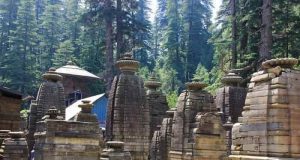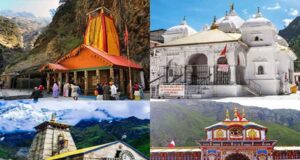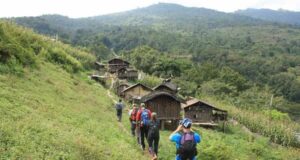The Jagannath Temple – Shrine of The Lord Of The Universe
The Jagannath shrine is an important Hindu pilgrimage destination committed to the Lord Jagannath who is a deity form of Shree Krishna (reincarnation of Lord Vishnu). Being one of the Hindu temples of the Char Dham (four holy places) pilgrimage Puri, Rameswaram, Dwarka, Badrinath (Badrinath is also part of Chota Chardham in Uttarakhand), necessary to be visited once in a lifetime of Hindu, it is located in the city of Puri of the Orissa state, the Eastern Coast of India.
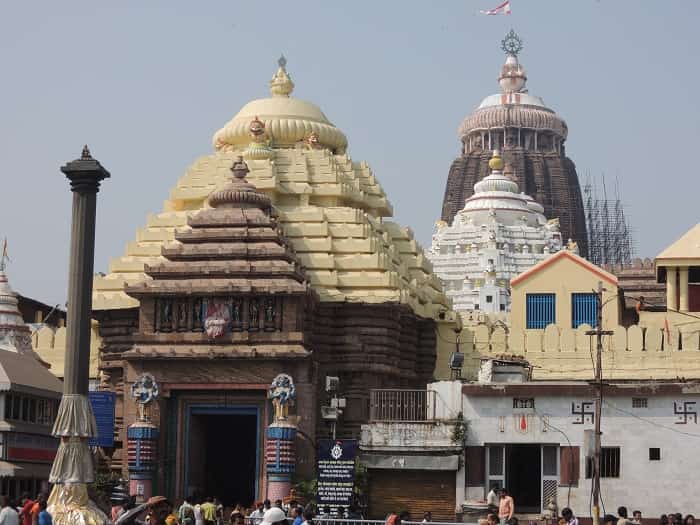
The temple derives its name from the two Sanskrit words namely, Jagat meaning universe and Nath meaning the Lord of. This means Jagannath means the Lord of Universe attributed to Lord Krishna.
The temple is consecrated to the Vaishnavites (a Hindu race who are followers of Shree Krishna) and Ramananda, a saint personally related with the shrine. In addition, it also holds significance for the followers of the Gaudiya Vaishnavism whose foundation was laid by Chaitanya Mahaprabhu who devoted his life to Jagannath and stayed in Puri.
To the world, this shrine is known for its annual Rath Yatra in June, the chariot festival. In this festival, a procession is carried out in which the three deities of the main temple are towed on gigantic adorned chariots.
History & Legend
The copper plates that were found at the temple site mention that a king named Anantavarman Chodaganga Dev built this temple in the 11th century. The temple was rebuilt in the 12th century by an Oriya emperor named Ananga Bhima Deva.
The temple was used for worshiping till the 16th century, before the state was attacked by Kalapahad, a general from Afghan. The temple was used again after a ruler reinstalled the deities, as he created a separate kingdom in a town called Khurda.
Like other historical sites of India, there are legends associated with this temple as well. One legend goes that the original name of Lord Jagannath was Lord Nila Madhaba, who was worshiped by Viswavasu, who used to worship the Lord in an unknown location inside a forest. King Indradyumna came to know about the deity and decided to send a priest from his kingdom to find the location of the deity.
This priest named Vidyapati was unable to figure out the place of worship. However, he managed to marry Lalita, the daughter of Viswavasu. Viswavasu accepted his son-in-law’s request to take him to the place where he worshiped the deity though he blindfolded him, as he did not want anybody else to be aware of the location.
Vidyapati found out a way to identify the location of the cave where the deity was worshiped. He managed to drop some mustard seeds on the way which would later grow into trees and help him pinpoint the exact location. A few days later, he informed the king about the location of the cave. But by the time Indradyumna arrived, the deity mysteriously disappeared. Indradyumna was disappointed. He decided to fast until death when he heard a celestial voice that he would be able to see the deity.
In the following days, he constructed a temple and dedicated it to Lord Vishnu. In the same temple, he installed idols of several deities including one of Lord Jagannath.
Upon the construction of the temple and installation of the idols, Indradyumna invited Jagannath Temple continues to be a religious center of Orissa, attracting thousands of visitors every year Lord Brahma for the consecration. Brahma was highly impressed with the dedication of Indradyumna and asked what more he could do for him than just consecrating the temple and the idols. Indradyumna asked Lord Brahma to bless his family so that they do not face any problems in their life.
There are few other legends as well. Such as Lord Jagannath himself supporting the king of Orissa in a battle against the king of Kanchi or the existence of a Buddhist Stupa at the current location of the temple, which was later relocated to Sri Lanka.
It is also said that the temple received huge amount of donations from Ranjit Singh, a Sikh leader.
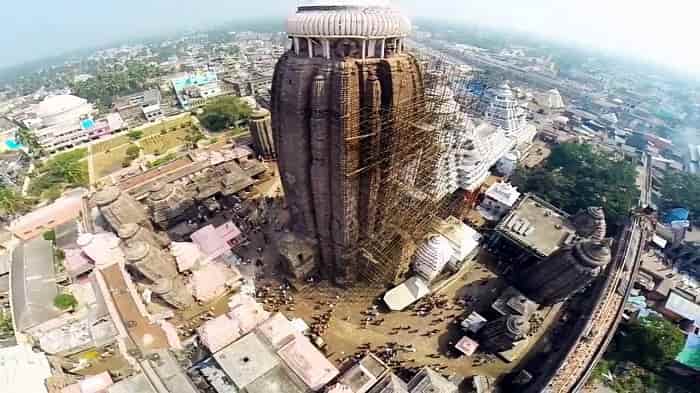
Origins
The Kalinga ruler, Anantavarman Chodaganga Dev, laid the temple’s foundation and during his era, the Jagamohana and the Vimana portions of the temple were erected (1078-1148 CE). This is evident from the recent discovery of copper plates of the Ganga dynasty. The temple that we see today is actually the reconstruction in 1174 CE by the Orissan ruler, Ananga Bhima Deva.
The Ritual chakra and flags atop the shikhara (top portion) is linked with the Sudarsana chakra where in the red flag signifies the presence of the Lord Jagannath in the temple.
According to a few archaeologists, there was a Buddhist stupa on the same place of the temple, wherein the tooth relic of the Buddha existed. This is now in Kandy, Sri Lanka. It was in the 10th century, that Jagannath worship started increasing gradually.
Temple – At a Glance (Structure)
Adorned in the Orissan style and enclosed by a high-fortified wall, the complex houses nearly 120 temples. The main temple is a curved monument whose top is embellished with the Sri Chakra that is a wheel of Vishnu with eight spokes. This is also called Nilachakra, the sacred one prepared from Ashtadhatu (8 things).
Erected up to 214 feet high above the internal chamber on an elevated stone platform, the temple tower is the residing place of the deities rule the complex. The pyramidal roofs other temples in the complex, adjacent halls (Mandapa) lead to the tower in steps.
[You may like to know about famous temples in Orissa]
The Singhadwara (The Lion Gate)
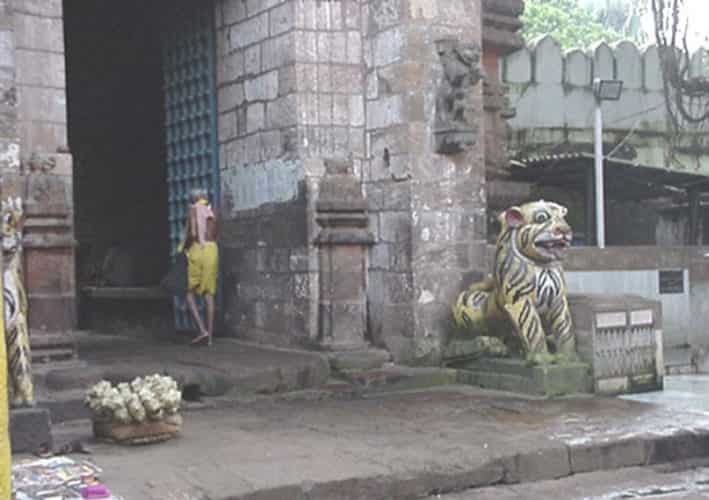
This is one of the four gates facing the East and main entrance to the temple. The gate is named Singhadwara due to the presence of two gigantic statues of crouching lions.
The gate faces the Bada Danda or the Grand Road from where the chariots start their journey to reach the Gundicha temple as the final destination during the Rath Yatra. There are 22 steps that take you to the temple. An idol of Lord Jagannath called Patita Pavana, meaning the savior of the oppressed and the fallen, is present on the gate’s right side. The belief is that in olden times the untouchables were not permitted in the temple and so they used to pray to this idol.
On the doorway, the statues of the two temple guards, Jaya and Vijaya, are present.
During the Rath Yatra, the three deities on the chariots come out from this gate.
On the top of the door, is the statue of Goddess Mahalakshmi, the goddess of wealth and Prosperity. When the three idols return from the Gundicha Temple during the Rath Yatra, they have to pacify Goddess Mahalakshmi by performing a ceremony for not taking her in the Yatra. After this only, it is said that the Mahalakshmi permits them to enter the temple.
A monolithic pillar of 16 sides known as the Aruna Stambha, an architectural marvel atop by the idol of Arun (the charioteer of the Sun Deity), is in front of this gate. Initially, this pillar was in the Sun temple of Konarak, which was then brought here by the Raja of Khurda.
Other Gates
There are three more gates facing the three remaining directions and are named after the animals carved on them. These are the Hathidara (Elephant Gate), the Vyaghradwara (Tiger Gate), and the Ashwadwara (Horse Gate).
The Mandapa
These are the pillared halls built on an elevated base used for religious parishioners. The major one is the Mukti Mandap, which is for the Sevayats, the temple servitors. It is in this hall that decisions regarding the daily arrangements and conduct of festivals are formed.
Another one is the Dol Mandap that hosts a splendid carved stone Torana (arch), which plays an important role in creating a swing for the Dol Yatra festival. In this festival, the idol of Dologobindo is sited on this swing. There is also a Snana Bedi, the rectangular stone base, wherein there is a ceremonial bathing of the three idols during the annual Snana Yatra.
Deities
The Jagannath, Balarama, and the goddess Subhadra are three deities seated on the ornamented base or the Ratnavedi in the sanctum. In addition, the Sudarshan Chakra and idols of Madanmohan and Bishwadhatri are also present here. The three idols and the Sudarshan Chakra are prepared from the holy Neem logs known as Daru Brahma. The deities are embellished with different garbs/costumes based on the season and festival.
Minor Temples
The temple complex encloses many small temples. The adjacent Mahalakshmi temple is of great religious significance in rituals. Another famous temple is the Kanchi Temple committed to Lord Ganesha. Here, initially, the idol was in Kanchipuram presently in Tamil Nadu.
Festivals
Apart from the Rath Yatra, there are many other festivals celebrated annually by thousands of people.
Nabakalevara Ceremony
Every 12 years, there is a year that has two months of Ashadh (June/July). At this time, the three wooden idols are reinstated during the Nabakalevara ceremony.
Chandan Yatra
On Akshaya Tritiya (April/May – an auspicious day of buying things and gold), the Chandan Yatra festival is celebrated wherein the construction of the chariots of the Rath Yatra is commenced.
Snana Yatra
This comes on the full moon day of the Jyestha (June) Hindu month whereon the deities are bathed and decorated.
Kitchen
This is the largest kitchen in India. A popular belief holds that Goddess Mahalakshmi monitors the food items made here as an offering to Jagannath. If there is a fault in cooking meaning not made according to the rituals, a dog is seen close to the kitchen. The cooks conclude that the Mahalakshmi is displeased with the food that is instantly buried and new cooking is done. Food is prepared only in earthen pots and with water from two special wells known as Ganga and Jamuna close to the kitchen. After offering to Jagannath, it is given to the devotees as Mahaprasad in the Ananda Bazar, North of the Singhadwara.
Temple Offerings
The Jagannath Temple is one of those temples that offer Mahaprasad to the deity, which is then distributed to the devotees at a reasonable amount. These offerings are made six times every day.
The times of the offerings are 08:30 a.m., 10:00 a.m., 11:00 a.m., 12:30 – 01:00 p.m., 07:00 – 08:00 p.m. and 11:00 p.m.
The kitchen of the temple is considered to be the largest of its kind.
Best Time to Visit
The temple is open all year long for the visitors. Several festivals are celebrated throughout the year, which means that as a devotee and a tourist, a person will be able to enjoy his/her trip to the temple and watch the various traditions and practices followed by the devotees.
How to Reach
Puri, being a major cultural and religious centre of the state, is well connected with rail and road network. While the rail route connects the town to distant locations such as Delhi, Valsad, Raipur, Ahmadabad, Howrah, Tirupati, Jodhpur, Patna, etc., the road network connects the town with neighboring cities and states.
Once you reach Puri, you can hire a cycle rickshaw or auto rickshaw for which you must bargain before riding on it. There are a few places from where you can hire a motorcycle if you want to explore the town on your own.
[You may also like to know about famous beaches in Orissa]
